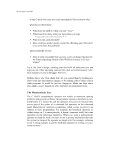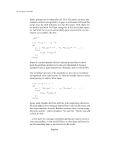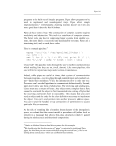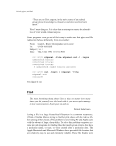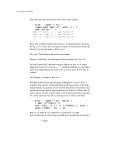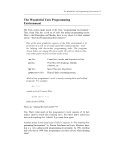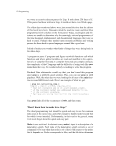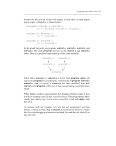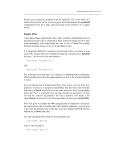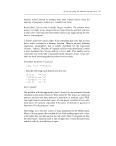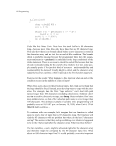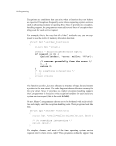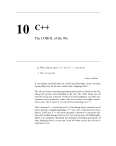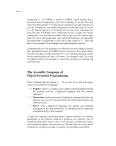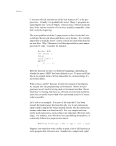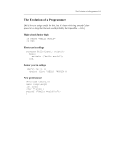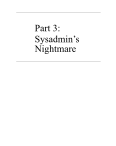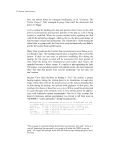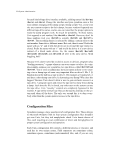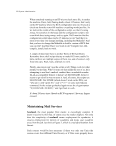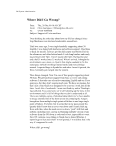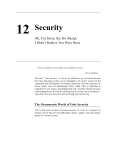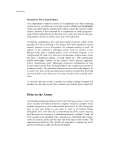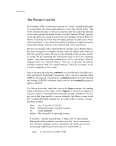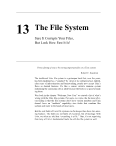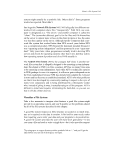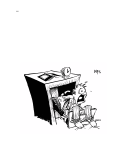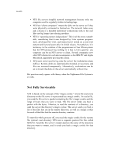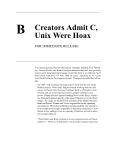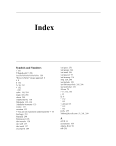126 The X-Windows Disaster idea at the time (especially if you are in a research community, experiment- ing with different approaches for solving the human-computer interaction problem), it created a veritable user interface Tower of Babel. If you sit down at a friend’s Macintosh, with its single mouse button, you can use it with no problems. If you sit down at a friend’s Windows box, with two buttons, you can use it, again with no problems. But just try mak- ing sense of a friend’s X terminal: three buttons, each one programmed a different way to perform a different function on each different day of the week—and that’s before you consider combinations like control-left-but- ton, shift-right-button, control-shift-meta-middle-button, and so on. Things are not much better from the programmer’s point of view. As a result, one of the most amazing pieces of literature to come out of the X Consortium is the “Inter Client Communication Conventions Manual,” more fondly known as the “ICCCM,” “Ice Cubed,” or “I39L” (short for “I, 39 letters, L”). It describes protocols that X clients must use to communi- cate with each other via the X server, including diverse topics like window management, selections, keyboard and colormap focus, and session man- agement. In short, it tries to cover everything the X designers forgot and tries to fix everything they got wrong. But it was too late—by the time ICCCM was published, people were already writing window managers and toolkits, so each new version of the ICCCM was forced to bend over back- wards to be backward compatible with the mistakes of the past. The ICCCM is unbelievably dense, it must be followed to the last letter, and it still doesn’t work. ICCCM compliance is one of the most complex ordeals of implementing X toolkits, window managers, and even simple applications. It’s so difficult, that many of the benefits just aren’t worth the hassle of compliance. And when one program doesn’t comply, it screws up other programs. This is the reason that cut-and-paste never works properly with X (unless you are cutting and pasting straight ASCII text), drag-and- drop locks up the system, colormaps flash wildly and are never installed at the right time, keyboard focus lags behind the cursor, keys go to the wrong window, and deleting a popup window can quit the whole application. If you want to write an interoperable ICCCM compliant application, you have to crossbar test it with every other application, and with all possible window managers, and then plead with the vendors to fix their problems in the next release. In summary, ICCCM is a technological disaster: a toxic waste dump of broken protocols, backward compatibility nightmares, complex nonsolu- tions to obsolete nonproblems, a twisted mass of scabs and scar tissue
X Myths 127 intended to cover up the moral and intellectual depravity of the industry’s standard naked emperor. Using these toolkits is like trying to make a bookshelf out of mashed potatoes. —Jamie Zawinski X Myths X is a collection of myths that have become so widespread and so prolific in the computer industry that many of them are now accepted as “fact,” without any thought or reflection. Myth: X Demonstrates the Power of Client/Server Computing At the mere mention of network window systems, certain propeller heads who confuse technology with economics will start foaming at the mouth about their client/server models and how in the future palmtops will just run the X server and let the other half of the program run on some Cray down the street. They’ve become unwitting pawns in the hardware manu- facturers’ conspiracy to sell newer systems each year. After all, what better way is there to force users to upgrade their hardware than to give them X, where a single application can bog down the client, the server, and the net- work between them, simultaneously! The database client/server model (the server machine stores all the data, and the clients beseech it for data) makes sense. The computation client/server model (where the server is a very expensive or experimental supercomputer, and the client is a desktop workstation or portable computer) makes sense. But a graphical client/server model that slices the interface down some arbitrary middle is like Solomon following through with his child-sharing strategy. The legs, heart, and left eye end up on the server, the arms and lungs go to the client, the head is left rolling around on the floor, and blood spurts everywhere. The fundamental problem with X’s notion of client/server is that the proper division of labor between the client and the server can only be decided on an application-by-application basis. Some applications (like a flight simu- lator) require that all mouse movement be sent to the application. Others need only mouse clicks. Still others need a sophisticated combination of the two, depending on the program’s state or the region of the screen where





























































































































































































